Chemicals & Safety
We hope that XSPC considers switching to a child proof / safety cap type bottle for increased safety once the original seal has been opened.
The MSDS for XSPC’s ECX coolant concentrate covers the Red, Green, Blue and Clear “colors” in the ECX range, but we could not see any mention of Black, White, Orange or Purple.
All the MSDS documents we’ve ever had to read advise seemingly over the top safety precautions and the ECX MSDS is no different. We are not going to stand up and say that we follow all the safety precautions advised because we don’t, however reading the MSDS will make you more informed about the product you are going to use.
Having read the MSDS could save valuable time in case an accident does occur and at the very least the end user should be informed about correct storage and disposal.
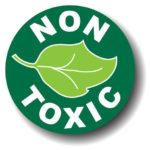 ECX Concentrate is classified as and labeled as NON TOXIC.
ECX Concentrate is classified as and labeled as NON TOXIC.
However we believe that Cooling System Fluid of any type is toxic, no matter what classification it receives or labeling is on the container. The first aid advice contained in the MSDS seems to back up our belief.
If you are a parent of, or have young children visiting where you have excess/spare cooling fluid, please take precautions so that young children can not gain access to your storage location.
Page 1 of the MSDS deals with the safety side of things, while Page 2 covers everything else including safe disposal. Let’s begin by taking a look at Page 1 and we’ll highlight some of the key points we think we need to know about.

There are quite a few points which we want to point out and have highlight those we think are most important for users to have knowledge of. This is not the complete MSDS documentation which can be viewed in the spoilers or clicking the link at the start of this page.
2. COMPOSITION / INFORMATION
Hazardous Components for EC: Propane-1,2-diol with corrosion inhibitors.
Let’s examine that for a moment. Propane-1,2-diol is also known as Propylene Glycol. So while ECX is based on refined vegetable oil extracts as we highlighted in the next section it does contain a type of glycol. The important thing to note about this is the glycol type. Ethylene Glycol & Propylene Glycol are both used in coolants to effectively lower the freezing point, alter the viscosity and increase thermal conductivity.
Ethylene Glycol is usually superior for each of those characteristics, but not required for a PC water-cooling system as apposed to a vehicle engine or home and industrial heating/cooling which most literature available on coolant types relates to.
Propylene Glycol we believe is the better option as an additive for PC water cooling fluid simply because it is less toxic and safer. We do not need the added performance that Ethylene glycol offers.
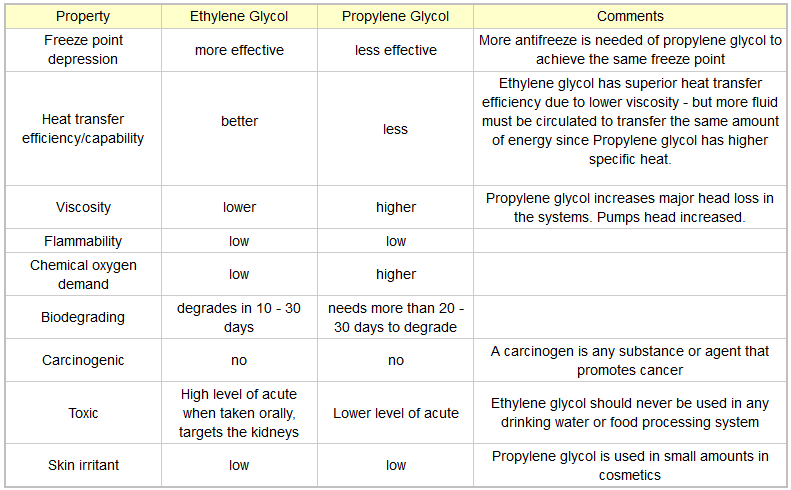
ECX is a “low oral toxicity proprietary antifreeze formulation based on refined vegetable extracts and non-toxic corrosion and scale inhibitors.” This tells us that ECX is a much safer and more environmental responsible choice.
“Classified as GRAS (Generally Regarded as Safe) as a food additive and not classified as harmful for handling or transport purposes.” “However we recommend good working practices are employed and personal protection gear is worn when handling any chemical.”
3. HAZARD IDENTIFICATION
Not classified as a hazard or environmental hazard under current legislation.
4. FIRST AID MEASURES
Health effects –
Eyes – Wash eyes promptly and rinse for 15 minutes. Get medical attention.
Skin – Remove affected person from source of contamination. Wash skin with soap or mild detergent.
Ingestion – Get medical attention. Rinse mouth thoroughly. DO NOT induce vomiting.
Inhalation – First Aid – Remove person to fresh air at once. Perform artificial respiration if breathing has stopped. Keep the affected person warm and at rest. Get medical attention.
6. ACCIDENTAL RELEASE MEASURES
Environmental Precautions – Prevent the material from entering drains or water courses without pre-treatment.
Spillage’s – Clean with absorbent material and dispose.
7. HANDLING AND STORAGE
Handling – No special measures necessary.
Protect against fire and explosion. – Take precautionary measures against static discharge.
Storage Containers should be tightly sealed and dry.
8. EXPOSURE CONTROL/PERSONAL PROTECTION
Respiratory Protection – if there is a risk of exposure to high vapor concentrations.
Hand Protection – PVC gloves
Eye Protection – Chemical goggles or face shield must be worn.
Body protection – Wear overall or apron.
We will assume PPE mentioned above is for process workers who are exposed to the large volumes of the product on a daily basis, because there is no way that any end user, ourselves included are going to be donning this sort of protection for a coolant fill or fluid change during regular maintenance.

9. PHYSICAL AND CHEMICAL PROPERTIES
Physical State – Liquid.
Colours – Red, Green, Blue, Clear.
Odour – Almost odourless
pH at 500g/l, 20’C – Range between 7.5 – 9.5
Density (g/cm3) – 1.04 – 1.10 depending on inhibitors
10. STABILITY AND REACTIVITY
Stability – Stable under normal conditions.
Conditions to Avoid – Heat, flames sparks.
Materials to Avoid – Powerful oxidising agents
11. TOXICOLOGICAL INFORMATION
Acute Toxicity LD 50/oral/rat:>20000 mg/kg
Irritancy – Eyes This material is irritating to mucous membrane/eyes.
Irritancy – Skin This material is non-irritant (Draize test) to the skin.
12. ECOLOGICAL INFORMATION
Mobility The product will dissolve rapidly in water.
Ecotoxicity – The product is rated as:
Algae EC50 (72h):>100mg/l.
Fish : LC50 (96h):.100mg/l, Oncorhynchus mykiss
Bacteria: >1000 mg/l Daphnids (acute) EC50 (48h):>100mg/l
13. DISPOSAL
Product Disposal Dump according to local regulations use EWC-no: 070104
“070104 – other organic solvents, washing liquids and mother liquors.”
Container Disposal – Containers should be cleaned by appropriate methods and then
re-used or disposed in same manner as contents.
15. REGULATORY INFORMATION
According to EEC directives – not subject to labeling
Footnote
“The above information is believed to be accurate.
The sole purpose of the datasheet is to provide guidance on the safe handling and use of the respective product. It does not form part of any product specification or contract. It is not practical for the information to
cover every conceivable application of the product.
It is the responsibility of the user to evaluate the information for their own particular purpose.
In no event shall the company beheld liable for any injury, loss or damage resulting from its use.“
Having had an enjoyable read, now it’s time for some visual stimulation in the form of some photos and first up let’s see some of our small batch mix in some XSPC PETG tubing.







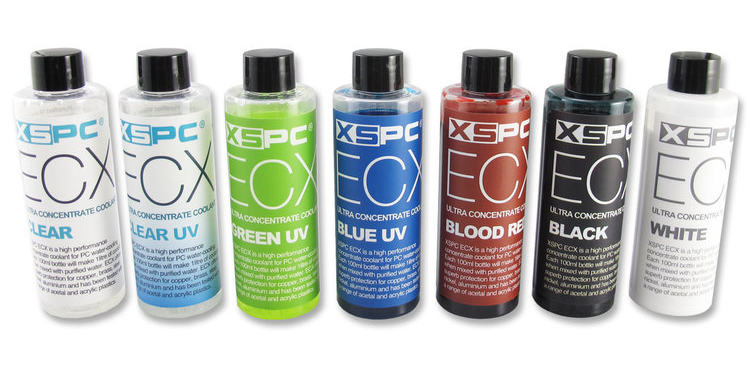
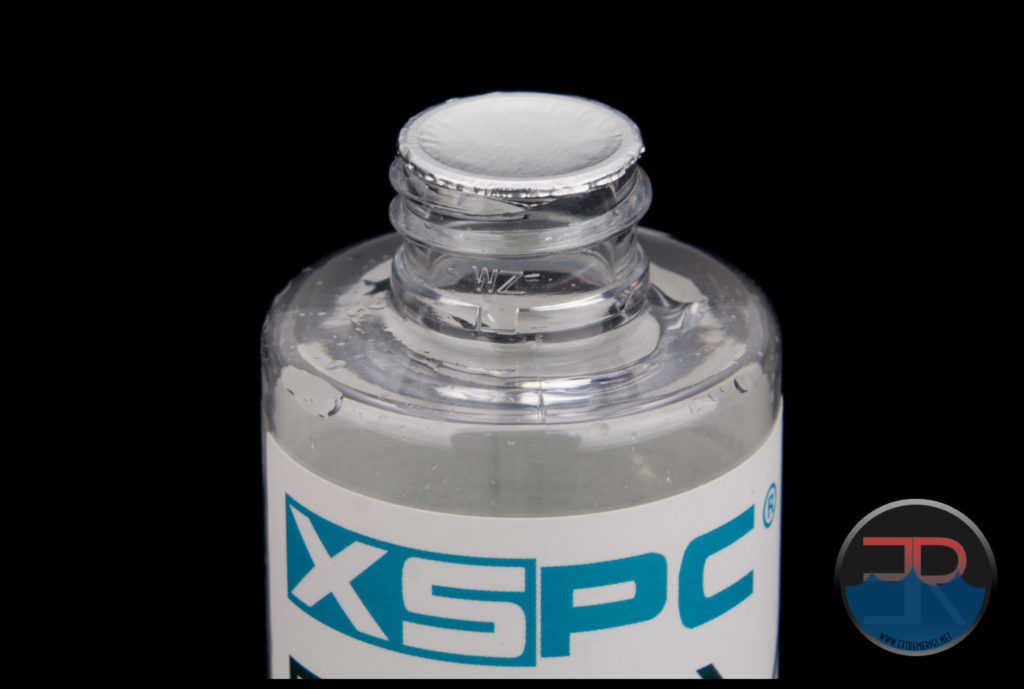
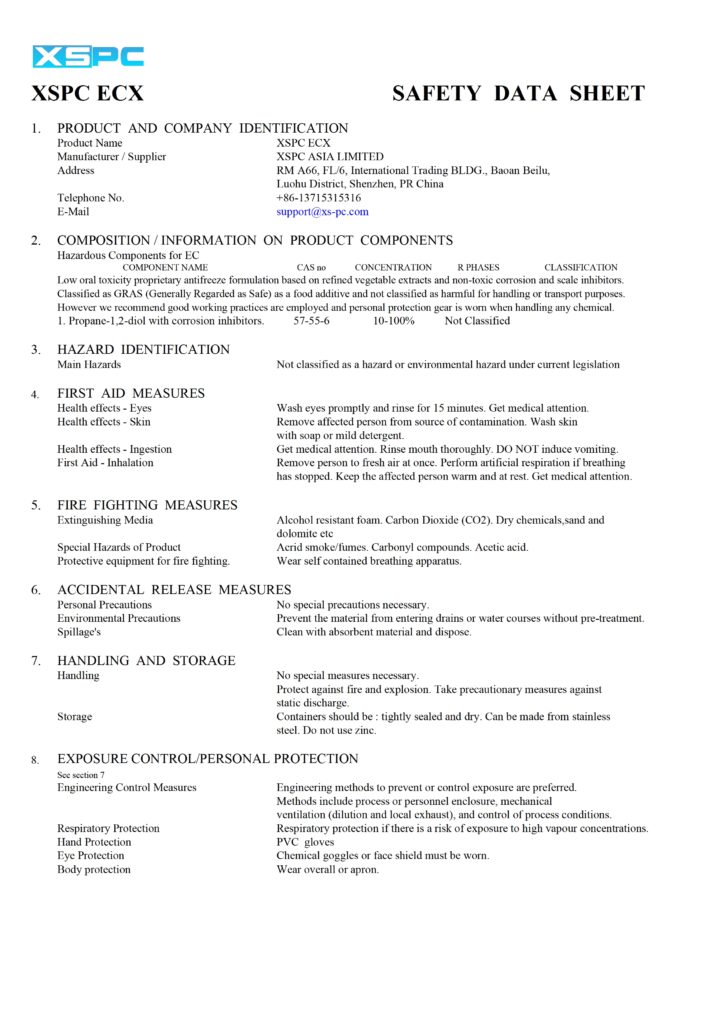
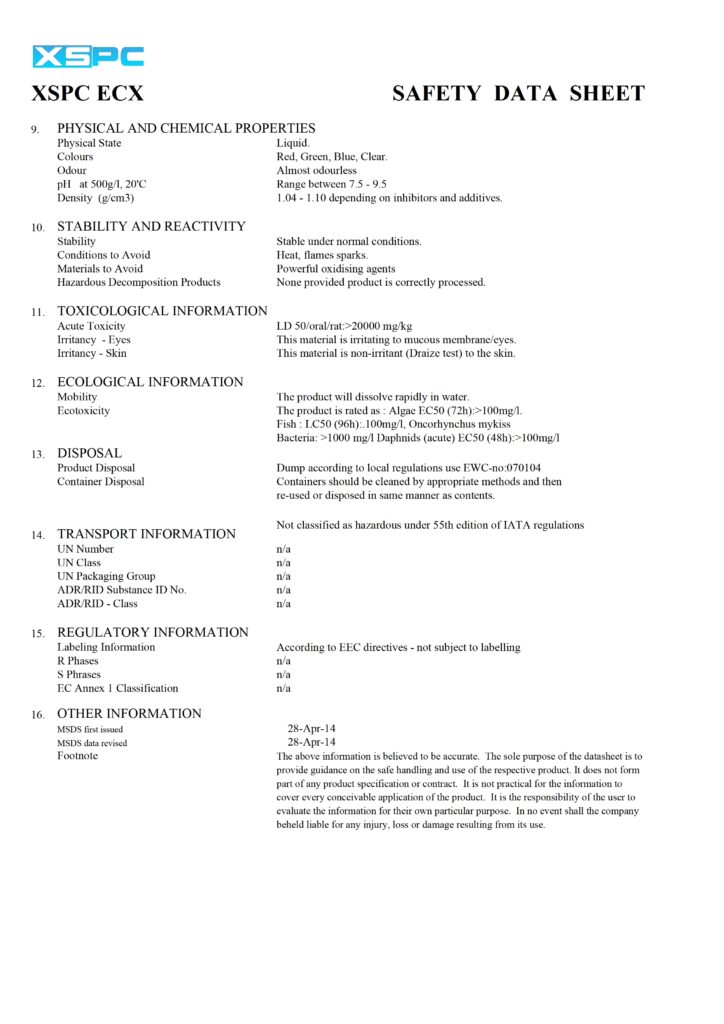



Outstanding! I checked this out to see how the XSPC coolant looked and see what you folks thought about it in general. As always, ER delivered an article with amazing detail covering things I didn’t think about!
Comments are closed.